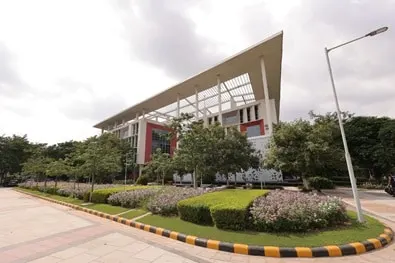Blogs


What is Machine learning? Must Read for Engineering Aspirants

To understand machine learning, we first need to understand what Artificial Intelligence is. This is because if Artificial Intelligence is a superset, Machine Learning is a subset of that.
AI is the ability of machines, systems, or computers to mimic human beings. That means machines can replicate the "intelligence" process of the human brain.
Through "learning," "understanding," and "behaving," machines can display intelligence, which is much similar to the human intelligence process. This intelligence is "artificial" and not "natural" because it lacks emotions and cognitive functions.
This broad philosophy of behaviour exhibited by machines is "Artificial Intelligence."
The question that arises for the common man is: How do the machines do it?
In other words, how can you teach the machines to behave in a particular way?
How do the machines "learn"?
This is where "Machine Learning" comes into the picture. Machine Learning is an application or set of applications through which a machine can be taught to behave intelligently.
What is Machine Learning?
Using a data collection, or data sample, which is technically known as "training data," the algorithms of machine learning build a model.
This model helps a system or machine to predict better or take decisions based on the training it received through the data.
This set of applications, which consist of these algorithms built to make machines "intelligent," is collectively known as Machine Learning.
Algorithms are nothing but a series of computational processing steps. These steps in machine learning can identify "patterns" in a seemingly random set of data.
These patterns or features or specific characteristics identified from huge amounts of data, found out by an intelligent machine using machine learning, are then used to identify similar patterns in new sets of data.
On being able to make these identifications, machines can then predict or take decisions, thereby determining how it needs to behave.
Machine Learning vs. Traditional Programming
To understand the difference between ML and traditional programming, we need to look at the below case email filtering.
There are many examples of how and where machine learning is being used. It is not just a part of high-tech professional solutions but also a part of our daily lives.
Let us take a look at how our email filtering works. Through machine learning algorithms, the system is fed data about different emails that have historically been sent as spam.
These algorithms sieve through the data and look for patterns and identify them. These patterns are later used by the Artificial Intelligence system to label future incoming mails as spam.
Please note that this is not a case of traditional programming. The method of identification is automatic and not programmed.
This helps the system pick up more data, keep "learning," and make its predictions more precise and accurate.
This also explains why sometimes certain non-spam mails are also sent to the spam folder automatically by the system.
The same system reads the identifiable pattern in these mails and classifies them as spam. Later, when these emails are extracted from the spam folder and brought back into the inbox, the system learns and tries to make corrections to its learnings.
In machine learning, the algorithms are created so that the system will throw up a predictive model on being fed with data.
On the other hand, traditional programming is a manual process whereby a programmer creates code to get an expected output only on that set of information that is being codified.
Examples of Machine Learning
Machine learning is everywhere. Let us pick up some from our daily lives.
When you board an Uber, and the system shows multiple routes but picks up the quickest one, weather apps predict the climate to the extent of an accuracy level of "it will start raining from midday onwards"!
Search engines offer search results even before we have typed the phrase completely; customer preference based advertisements are some other examples.
Web channels like Netflix show movie suggestions based on last searched or watched movies or series and displays the percentage of matches of the suggestions to previously watched shows.
Robots that vacuum the floor autonomously build a map of the floor based on the area it has covered during its movements. There are usages of machine learning everywhere.
Machine learning can drive greater effectiveness in our professional and personal lives as big data continues to expand.
As computing gets more affordable and powerful, data scientists will continue to build more meaningful algorithms.
The Scope of Machine Learning at BMU
We strongly believe in the philosophy that our students be groomed to face the real world of the business.
We have tied up with the prestigious Imperial College, London, to ensure that our curriculum is designed with the best minds in the field.
We do not want our students to fail in the transition from academia to corporate. Therefore, our engineering and management courses are incorporated with the latest subjects, economy, science, technology, and business trends. Artificial Intelligence is no exception to that.
We have included AI and Machine Learning in our Bachelor of Electronics and Communications Engineering course.
This is to ensure that our students can choose their careers from all the available options in the field and certainly do not miss out on some of the job opportunities that have a high demand in the market.
How machine learning works?
Now that we understand what Machine learning is, we need to have a fair understanding of how machine learning works.
The data scientists or machine learning experts are working to build a model, following four steps. Let us look at them:
1. How to prepare a set of training data
Training data is nothing but sample data as used in statistics to generate patterns or conduct statistical analysis.
In Machine Learning, this data s fed into the Machine Learning algorithm, which will help it solve a problem by classifying its features and identifying behaviours.
The Training Data can be of two types: Labeled or Unlabelled. In the former case, the training data is already classified according to its features.
The algorithm identifies them and generates a pattern. Whereas in the case of unlabelled data, no such tagging is done, and the algorithm will need to extract the features itself.
While preparing the training data, proper care should be taken to eliminate inherent bias, which can impact the model.
Let's say if the model is preparing some kind of predictive analysis of a medicine's effect on heart patients.
The training data fed into the algorithm had no cases of a heart patient with diabetes. The prediction model will not be able to incorporate the effect of the medicine on patients having both. Therefore it is important to randomize and de-dupe the data.
2. Choice of Algorithm for the Machine Learning Model
The main logic used behind choosing an algorithm for the machine learning model is dependent on three factors:
- The data set type - labeled or unlabelled.
- The volume of data in the data set
- The problem type
The algorithms that can be used on labelled data are Regressions algorithms (linear and logistic), Instance-based, and decision tree-based algorithms.
The algorithms that can be used on unlabelled data are Neural networks, association algorithms, and cluster model algorithms
3. How algorithms create a model
Algorithms create a model based on the "training" it receives. It receives this training through the training data, which is fed and run into the algorithm.
It also refines itself through the evaluation data, which is the output data. The output data is compared with the expected results.
The model is fine-tuned to make the output data as close to the expected results. This makes the model more and more precise, and the prediction results more accurate.
This is repeated till the algorithm's output matches with the result it is expected to yield. Through this iterative process, the algorithm becomes more refined, trained, and accurate.
4. How to improve the model
Once the model is ready, newer random data sets are used to test its accuracy and repeatedly run to perform more precisely.
The new data feeds itself from areas where the problem exists. For example, a mail filtering system will use data of different kinds of mails in the inbox.
Machine learning methods
There are three kinds of Machine Learning styles or methods: Supervised, Unsupervised and semi-supervised learning.
a) Supervised machine learning
When Machine Learning uses a labelled set of data to get trained, it is known as supervised learning.
The tagging is already present in the training data fed into the algorithm. The machine learning task at hand could be a 'classification' task.
The algorithm's expected output would be to classify a given input into one of the two (binary classification) or many (multi-class classification) predefined classes or categories.
An example of multi-class classification would be classifying or categorising an image of a person as Person A, B, or C. While an example of binary classification would be to identify an incoming mail in your mailbox as 'Spam' or 'Ham.'
The other kind of task that machine learning algorithms deal with is called a 'regression' task. The difference between regression and classification tasks is in the expected output from the algorithm. The expected output is categorical (or discrete) in classification.
The expected output for regression tasks is a numerical (continuous) value. For example, predicting house prices in an area, given various parameters like location, age, size and number of rooms, etc.
Supervised machine learning makes the model's training easier because of the presence of 'labels' in the initial training set. But, obtaining properly labelled data could be expensive and may not be readily available.
b) Unsupervised machine learning
Unsupervised machine learning operates on lots of unlabelled or untagged data. It uses algorithms to extract meaningful features and relationships among the data without human intervention...
The two most commonly used categories of algorithms used belong to 'clustering' and 'principal component analysis.' An example of clustering algorithms would be to find consumer categories that would respond favourably to a particular advertising style.
On the other hand, principal component analysis is a dimensionality reduction technique that tries to learn a new (preferably smaller) feature space that preserves the essential characteristics (like variance) of the original data set.
Since the new feature is smaller than the original space, this output is often used for better visualisation or as an input to supervised learning algorithms where the computational efficiency reduces with the increasing feature space.
An example of an unsupervised learning algorithm is credit card fraud detection (anomaly detection).
c) Semi-supervised learning
Semi-supervised learning is an attempt to find a happy ground between supervised and unsupervised learning.
On the one hand, it reduces the requirement of having too much-labelled data; on the other hand, the same smaller set of labelled data is used to guide the unsupervised learning algorithms to better clustering and feature extraction.
Machine Learning is a subject that is of interest to the students of engineering and those from non-technical backgrounds.
Everyone wants to be a part of the technological revolution that has taken the world by storm. There are references to Artificial Intelligence and Machine Learning even in high school level textbooks. That's how much this subject has grown in popularity.
This is well-deserved, given the widespread uses of Artificial Intelligence. From taxi rides to mails, vacuum cleaners, to voice assistants, everything needs Artificial Intelligence. Every business, organisation, machine, and process is being revamped by AI.
To make a system AI-enabled, one needs Machine Learning. Science professionals, engineers, students, technological professionals are doing their best to master ML.
Job opportunities in ML have tripled in the last five years. And it is expected to grow even more, which is great news for those contemplating a career in Artificial Intelligence.
Trending Blogs
-
6 Most Demanding Engineering Courses in Future (With Salary & Scope)
-
Top 20 High Salary Courses after 12th Science (PCM) 2025
-
Top 14 Career Options After LLB in India 2025
-
12 Fun Management Games For MBA Students
-
16 Prestigious Law Firms in India to Kickstart Your Career
Latest Blogs
-
BA LLB Subjects: A Comprehensive Guide to Syllabus & Career Prospects
-
MBA in Operations Management: Optimise Processes, Drive Growth
-
10 Best Law Colleges in Delhi NCR: Shape Your Legal Career
-
Highest Paying Jobs after BBA in India: Turning Degrees into Paychecks
-
B.Tech. Admission 2025: Your Path to a Promising Future in Engineering
-
Selecting the Right Major and Minor for BA Liberal Arts: An Ultimate Guide
-
The Ultimate MBA Admission 2025 Guide: Turn Ambition into Achievement
-
What Is Liberal Arts Education: More Than Just a Degree
-
Broadening Horizons: Exploring Liberal Arts Subjects
-
BBA LLB Course: Full Form, Admission Process, Fees, Syllabus & More
Related Blogs

B.Tech. Admission 2025: Your Path to a Promising Future in Engineering
The revolutionary success of each innovative breakthrough exists because of a visionary person who serves as an engineer, problem-solver and creative ...

Top 14 Engineering Branches in India Explained
Engineering is often chosen by students seeking to shape tomorrow’s world. Many see it as a path that merges creativity with practical solutions for...

Top 12 Types of Engineering – Scope & Career Options
Engineering controls every bit of your daily life, right from the very foundation to even the technology and innovations that are carrying you forward...

From Mechanics to Explosions: How Bachelor of Technology (Mechanical Engineering) Can Propel a Career in Nuclear Engineering and Defense
When we think of explosives and nuclear technology, our minds radically race to picture intense explosions or world-changing discoveries. But, do you ...

Is Mechanical Engineering a Good Career? Explore Here!
Mechanical engineering has long been one of the most significant pillars of engineering, contributing to the advancement and shaping of contemporary l...

Where Code Meets Circuit: Electronics and Computer Engineering
Bachelor of Technology (Electronics and Computer Engineering), or B.Tech. (Ecom.) is an up-to-date, evolving discipline that bridges the hardware and ...

